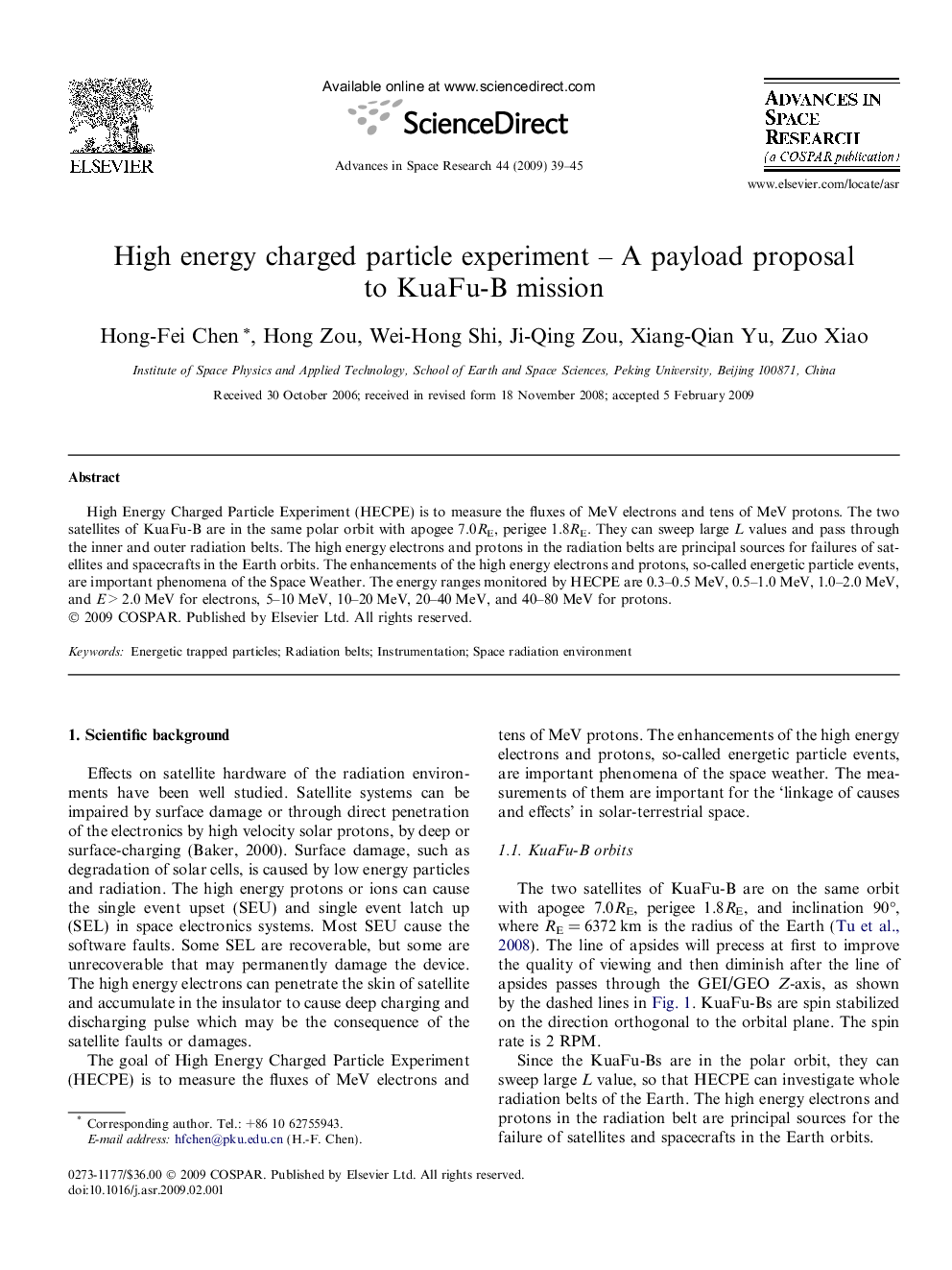| Article ID | Journal | Published Year | Pages | File Type |
|---|---|---|---|---|
| 1766671 | Advances in Space Research | 2009 | 7 Pages |
Abstract
High Energy Charged Particle Experiment (HECPE) is to measure the fluxes of MeV electrons and tens of MeV protons. The two satellites of KuaFu-B are in the same polar orbit with apogee 7.0RE, perigee 1.8RE. They can sweep large L values and pass through the inner and outer radiation belts. The high energy electrons and protons in the radiation belts are principal sources for failures of satellites and spacecrafts in the Earth orbits. The enhancements of the high energy electrons and protons, so-called energetic particle events, are important phenomena of the Space Weather. The energy ranges monitored by HECPE are 0.3–0.5 MeV, 0.5–1.0 MeV, 1.0–2.0 MeV, and E > 2.0 MeV for electrons, 5–10 MeV, 10–20 MeV, 20–40 MeV, and 40–80 MeV for protons.
Related Topics
Physical Sciences and Engineering
Earth and Planetary Sciences
Space and Planetary Science
Authors
Hong-Fei Chen, Hong Zou, Wei-Hong Shi, Ji-Qing Zou, Xiang-Qian Yu, Zuo Xiao,
